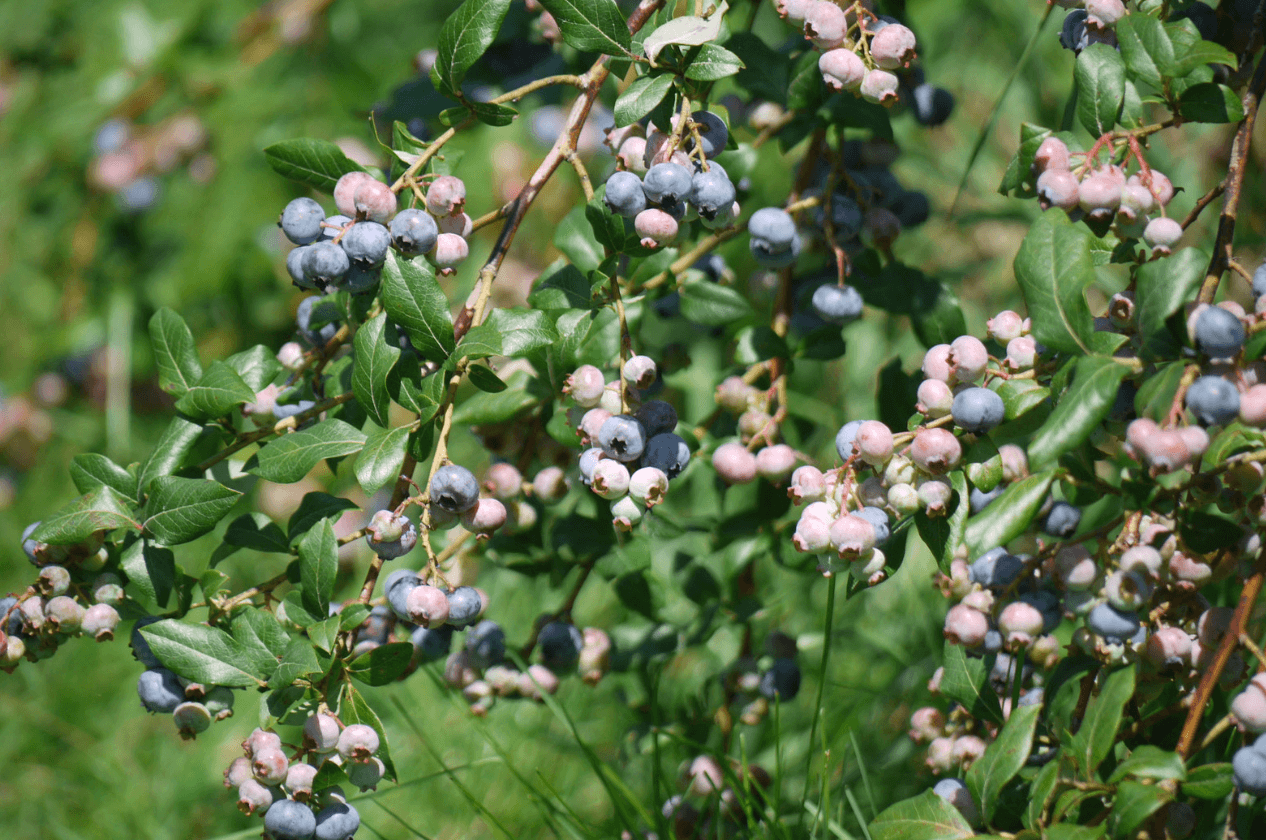How to Grow Blueberries in the UK

Blueberries are delicious, healthy, and easy to grow in the UK. They are a great addition to any garden, providing tasty fruit and beautiful flowers. In this article, we will go over everything you need to know about growing blueberries in the UK, including the best varieties, planting and care tips, and common challenges to watch out for.
Before we get started, it’s important to note that blueberries are an acid-loving plant and ideally your soil needs a pH between 4.5 and 5.5. If your soil is not naturally acidic, you can add sulfur or other acidic amendments to lower the pH. You should also choose a location for your blueberry bushes that receives full sun for at least six hours per day, because like any berry plant – they need a good amount of sunlight to help ripen up those juicy berries!
Blueberry Varieties to Grow in The UK
There are a wide variety of blueberry bushes that can be grown in the UK, all of which will provide a great harvest, but they all offer a great crop if grown correctly and some varieties allow you to grow blueberries in pots.
- Duke: Duke blueberry bushes are a great choice for UK gardeners. They are hardy, producing large berries that are perfect for eating fresh or using in recipes. Duke blueberry bushes are self-pollinating, which means you only need one plant to produce fruit.
- Bluecrop: Bluecrop blueberry bushes are another popular choice for UK gardens. They are known for their large, sweet berries and their ability to withstand cold temperatures. Like Duke blueberry bushes, Bluecrop plants are self-pollinating, so you only need one plant to produce fruit.
- Elliott: Elliott blueberry bushes are a good option for UK gardeners who want to grow their own blueberries but have limited space. These bushes are smaller and more compact than other varieties, making them perfect for growing in pots or small garden beds – even if you only have a balcony garden, you can still have blueberries.

Planting Your Blueberries
Once you have chosen the right variety of blueberry bushes for your garden, it’s time to plant it. You can plant bare-root blueberry bushes in autumn or winter, making sure your soil is right – or you can plant container-grown bushes in the spring.
Whichever method you choose, make sure to dig a hole that is slightly larger than the root ball of the plant, and mix some compost or other organic matter into the soil before planting – remember if you’re mixing in compost, then go for something that has the low pH levels that they will love – a good ericaceous compost will do the job.
After planting, water your blueberry bushes well to help them establish themselves in their new location. Be sure to keep the soil evenly moist, but not waterlogged, throughout the growing season.
In addition to watering, blueberry bushes also need to be fertilised to promote healthy growth and fruit production, the best time to apply fertiliser is during the early Spring months before that first growth, if you prepared your soil well then you will only need to fertilise once a year. As we have already discussed, use a fertiliser that is acid-rich to keep the pH level correct for the plant.
Pruning Blueberries
Another important aspect of growing blueberries in the UK is pruning. Pruning helps to keep the plants healthy and productive, and it also helps to maintain their shape. The best time to prune blueberry bushes is in the late winter or early spring before new growth begins, this can be done at the same time as fertilising. Use pruning shears to remove any dead, damaged, or crossing branches, and thin out the interior of the plant to increase air circulation and light penetration.
Challenges
Finally, there are a few common challenges to watch out for when growing blueberries in the UK. One of the most common issues is pests, such as birds and insects, which can damage the fruit or the plants themselves – there’s nothing worse than seeing all your blueberries start to come out and then see them gobbled up by birds!
To protect your blueberries, you can use netting or other physical barriers such as horticultural fleece. You can try using natural repellents, such as garlic or pepper spray – though be careful that you don’t end up tainting the taste of the berries, nobody wants garlic-tasting blueberries.
Another common challenge are diseases, much like any other plant. Blueberries are susceptible to a number of diseases, including root rot, leaf spot, and fruit rot. To prevent these diseases, avoid over-watering and keep an eye out for any signs of disease and trim or treat quickly to stop it from spreading.
And that’s it – as most varieties are hardy, it’s easy to get going with blueberries and start to harvest bowls of great-tasting berries year after year. You will start with one bush, but we guarantee you will want more!






